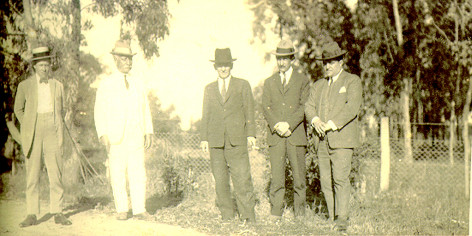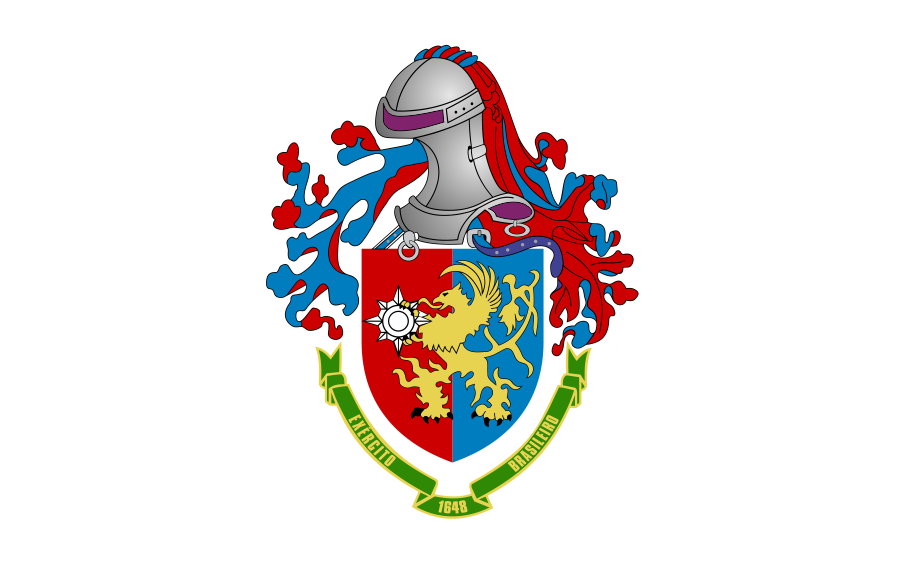|
Lightning Column
The Lightning Column () was the last Tenentism, tenentist uprising, fought in South Region, Brazil, southern Brazil from November 1926. Under the command of general Isidoro Dias Lopes, exiled in Argentina, military and civilian leaders of the government's opposition in Rio Grande do Sul combined incursions across Brazilian borders with uprisings in Brazilian Army in the First Republic, army garrisons in Rio Grande do Sul. The uprising, contrary to the Federal government of Brazil, federal and state governments, intended to indirectly support the Coluna Prestes, Prestes Column, which was in Mato Grosso. Some conspirators prematurely started the revolt before the scheduled date (26 December), compromising the campaign plan, which was quickly dismantled by the loyalist army and Public Forces (Brazil), state forces. Previous revolts in Rio Grande do Sul were suppressed in Rio Grande do Sul Revolt of 1924, 1924 and Rio Grande do Sul Revolt of 1925, 1925, but the defeated rebels remained ... [...More Info...] [...Related Items...] OR: [Wikipedia] [Google] [Baidu] |
Tenentism
Tenentism () was a political philosophy of junior army officers (, , "lieutenants") who significantly contributed to the Brazilian Revolution of 1930 that ended the First Brazilian Republic. Background The first decades of the 20th century saw marked economic and social change in Brazil. With industrialization on the rise, the Federal government of Brazil, federal government — dominated by the coffee oligarchs and the old order of Milk coffee politics, ''café com leite'' politics and ''Coronelism, coronelismo'' — came under threat from the political aspirations of new urban groups: the proletariat, government and white-collar workers, merchants, bankers, and industrialists. In parallel, growing prosperity encouraged a rapid rise of a new working class of Southern and Eastern European immigrants who contributed to the growth of Trade union, trade unionism, Anarchism in Brazil, anarchism, and Socialism in Brazil, socialism in Brazil. In the post-World War I period, Brazil saw ... [...More Info...] [...Related Items...] OR: [Wikipedia] [Google] [Baidu] |
Bagé
Bagé () is a Brazilian municipality located in the state of Rio Grande do Sul. In 2020, its population was 121,335 in a total area of 4,096 km2. It is the seventeenth largest city in the state according to the 2011 census. The city was founded in 1811 and given city status in 1859. Due to its strategic border location, Bagé has remained of significant military importance. Prior to official reorganization as a city, Bagé was seized by military forces from Uruguay and Argentina. Primary industries located in the surrounding area are cattle and sheep ranching, as well as meat packing industries and wool depots. Recently, Bagé has become one of the largest wheat-producing areas in Rio Grande do Sul. Along with wheat, soybeans are also grown in the surrounding region. Etymology There are several theories as to the origins of the name of Bagé. One states that there was an indigenous chieftain in the region called Ibajé, although the existence of this chifetain has never b ... [...More Info...] [...Related Items...] OR: [Wikipedia] [Google] [Baidu] |
Washington Luís
Washington Luís Pereira de Sousa (; 26 October 1869 – 4 August 1957) was a Brazilian politician who served as the 13th president of Brazil. Elected governor of São Paulo state in 1920 and president of Brazil in 1926, Washington Luís belonged to the Republican Party of São Paulo (PRP) and served as the last president of the First Brazilian Republic. biblioteca.presidencia.gov.br Facing the crisis generated by the in the United States, the president lost almost all his support. He selected his friend Júlio Prestes as his successor in 1930, but just three weeks bef ... [...More Info...] [...Related Items...] OR: [Wikipedia] [Google] [Baidu] |
Ministry Of War (Brazil)
The Ministry of War () was a government ministry of Brazil. It was created on 22 April 1821, later confirmed by a decree of 2 May 1822, as the Secretary of State for War Affairs after the dismemberment of the Secretary of State for Foreign Affairs and War. After the proclamation of the republic in Brazil, it was renamed "Ministry of War" with Law No. 23 of 30 October 1891. References See also * Armed Forces of the Empire of Brazil * Ministry of Defense of Brazil Ministry of Defence (Brazil) War {{Brazil-mil-stub ... [...More Info...] [...Related Items...] OR: [Wikipedia] [Google] [Baidu] |
Brazilian Army Aviation (1919–1941)
Brazilian Army Aviation, created in 1919, operated fixed-wing aircraft (planes) as part of the Brazilian Army until its incorporation into the Brazilian Air Force in 1941, when it ceased to exist. The Brazilian Army returned to having an air component in 1986, with the same name and history, but using Rotorcraft, rotary-wing aircraft (helicopters) instead. From 1927 to 1941, aviation became the fifth branch of the army, alongside infantry, Brazilian cavalry, cavalry, artillery and engineering. Its staff were trained at the Military Aviation School, founded in 1919 in Campo dos Afonsos, Rio de Janeiro, Campo dos Afonsos, Rio de Janeiro, and remembered as a precursor to the current Army Aviation Instruction Center and Brazilian Air Force Academy, Air Force Academy. The army's first aerial experience was with observation balloons in the Paraguayan War, in 1867. At the beginning of the 20th century, the military use of a new technology, the airplanes, attracted interest in Brazil. ... [...More Info...] [...Related Items...] OR: [Wikipedia] [Google] [Baidu] |
Assis Brasil E Isidoro Dias Lopes
Assis is a city and a municipality in the southwestern part of the state of São Paulo in Brazil. The population is 101,409 (2022 est.) in an area of 460.61 km. The town was founded on July 5, 1905, and became a municipality in 1917, when it was separated from Platina. It is the largest city of its microregion, and the 2nd of its mesoregion, and is 434 km away from the capital, São Paulo. The town has an annual average temperature of 21,37 °C, annual rainfall , and the vegetation predominates Mata Atlântica and Cerrado, is then a transition zone of vegetation. Its Human Development Index (HDI) is 0.805, considered high if compared to state and is in 28th place among Brazilian cities. The name ''Assis'' is a reference to Captain Assis, who explored the lands of the region. Is currently formed by the city of Assis, with its single district headquarters since Tarumã became a separate municipality in 1990. The city is known for its title ''Fraternal City'' and th ... [...More Info...] [...Related Items...] OR: [Wikipedia] [Google] [Baidu] |
Artur Bernardes
Artur da Silva Bernardes (8 August 1875 – 23 March 1955) was a Brazilian lawyer and politician who served as the 12th president of Brazil from 1922 to 1926. Bernades' presidency was marked by the crisis of the First Brazilian Republic and the almost uninterrupted duration of a state of emergency. During his long political career, from 1905 until his death, he was the main leader of the Republican Party of Minas Gerais (PRM) from 1918–1922 until the party's closure in 1937, and founder and leader of the Republican Party (PR). Before his presidency, Bernardes served as president (governor) of Minas Gerais from 1918 to 1922, during which time he founded the current Federal University of Viçosa and prevented American investor Percival Farquhar from exploiting the iron ore deposits in Itabira, cultivating an image of a nationalist and municipalist leader. A ''status quo'' and " milk coffee" candidate in the 1922 presidential election, Bernardes was the target of fake letter ... [...More Info...] [...Related Items...] OR: [Wikipedia] [Google] [Baidu] |
Joaquim Francisco De Assis Brasil
Joaquim Francisco de Assis Brasil (29 July 1857 – 24 December 1938) was a Brazilian lawyer, politician, diplomat, writer and poet. He founded the Liberator Party and was a supporter of republicanism. He served as Governor of Rio Grande do Sul in 1891–92 and Ministry of Agriculture in 1911. Together with the Baron of Rio Branco, he signed the Treaty of Petrópolis, which passed the territory of Acre to Brazilian control after the Acre War. The Acrean municipality of Assis Brasil was named after him. Assis Brasil also introduced livestock to Brazil, including the Jersey cattle, the Devon cattle, the Karakul sheep and the Arabian horse, and contributed to the improvement of the Thoroughbred The Thoroughbred is a list of horse breeds, horse breed developed for Thoroughbred racing, horse racing. Although the word ''thoroughbred'' is sometimes used to refer to any breed of purebred horse, it technically refers only to the Thorough .... He was Brazil's ambassador to the U ... [...More Info...] [...Related Items...] OR: [Wikipedia] [Google] [Baidu] |
Brazilian Navy
The Brazilian Navy () is the navy, naval service branch of the Brazilian Armed Forces, responsible for conducting naval warfare, naval operations. The navy was involved in War of Independence of Brazil#Naval action, Brazil's war of independence from Portugal. Most of Portugal's naval forces and bases in South America were transferred to the newly independent country. The government maintained a sizeable naval force in the initial decades following independence. The navy was later involved in the Cisplatine War, the List of conflicts in South America, River Plate conflicts, the Paraguayan War as well as other sporadic List of conflicts in South America, rebellions that marked Brazilian history. By the 1880s, the Brazilian Imperial Navy was the most powerful in South America. After the Revolta da Armada, 1893–1894 naval rebellion, there was a hiatus in the development of the navy until 1905, when Brazil acquired Minas Geraes-class battleship, two of the most powerful and advanc ... [...More Info...] [...Related Items...] OR: [Wikipedia] [Google] [Baidu] |
Brazilian Army
The Brazilian Army (; EB) is the branch of the Brazilian Armed Forces responsible, externally, for defending the country in eminently terrestrial operations and, internally, for guaranteeing law, order and the constitutional branches, subordinating itself, in the Federal government of Brazil, Federal Government's structure, to the Ministry of Defence (Brazil), Ministry of Defense, alongside the Brazilian Navy and Brazilian Air Force, Air Force. The Military Police (Brazil), Military Police (; PMs) and Military Firefighters Corps (; CBMs) are legally designated as reserve and auxiliary forces to the army. Its operational arm is called Land Force. It is the largest army in South America and the largest branch of the Armed Forces of Brazil. Emerging from the defense forces of the Portuguese Empire in Colonial Brazil as the Imperial Brazilian Army, its two main conventional warfare experiences were the Paraguayan War and the Brazilian Expeditionary Force, and its traditional rival i ... [...More Info...] [...Related Items...] OR: [Wikipedia] [Google] [Baidu] |
São Sepé
São Sepé is a municipality in the state of Rio Grande do Sul, Brazil. See also *List of municipalities in Rio Grande do Sul This is a list of the municipalities in the state of Rio Grande do Sul (RS), located in the South Region of Brazil. Rio Grande do Sul is divided into 497 municipalities, which are grouped into 35 microregions, which are grouped into 7 mesoregio ... References Municipalities in Rio Grande do Sul {{RioGrandedoSul-geo-stub ... [...More Info...] [...Related Items...] OR: [Wikipedia] [Google] [Baidu] |





